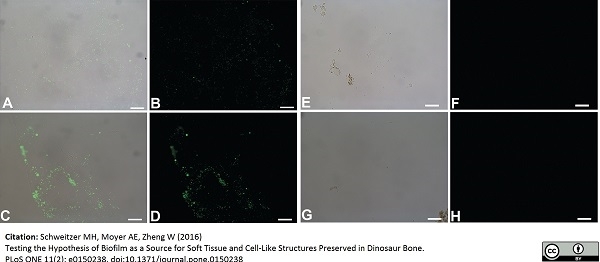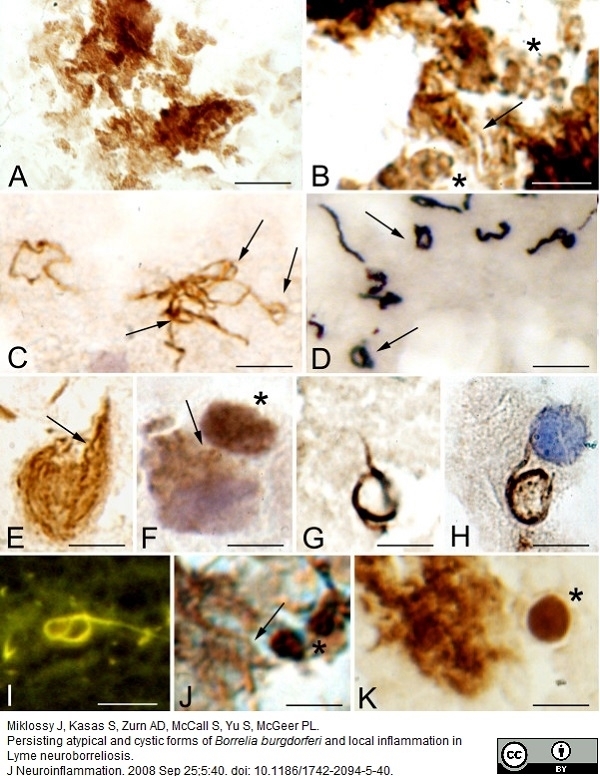Peptidoglycan antibody | 3F6B3 (10H6)



Mouse anti Peptidoglycan
- Product Type
- Monoclonal Antibody
- Clone
- 3F6B3 (10H6)
- Isotype
- IgG1
- Specificity
- Peptidoglycan
| Mouse anti peptidoglycan antibody, clone 3F6B3 recognizes the 3D polymer complex structure of peptidoglycan (PG). In a competitive immunoassay format, several compounds were found to be ineffective as inhibitors; muramyldipeptide, N-acetylglucosamine, chitin and acid hydrolyzed chitin. The epitope appears to consist of discontinuous glycan and/or amino acid residues. |
- Target Species
- Bacterial
- Product Form
- Ascitic Fluid - raw
- Preservative Stabilisers
- None present.
- Immunogen
- This antibody was raised against insoluble peptidoglycan obtained by TCA-heat and ethanol extraction of Streptococcus mutans BHT cells.
- Regulatory
- For research purposes only
- Guarantee
- 12 months from date of despatch
Storage in frost-free freezers is not recommended.
This product should be stored undiluted. Avoid repeated freezing and thawing as this may denature the antibody. Should this product contain a precipitate we recommend microcentrifugation before use.
| Application Name | Verified | Min Dilution | Max Dilution |
|---|---|---|---|
| ELISA | |||
| Immunofluorescence | |||
| Immunohistology - Frozen | |||
| Immunohistology - Paraffin 1 |
- 1Treatment with strong acid, for Gram positive bacteria, or with a detergent, such as SDS, for Gram-negative bacteria may be necessary to expose the epitope.
References for Peptidoglycan antibody
-
Miklossy, J. et al. (2004) Borrelia burgdorferi persists in the brain in chronic lyme neuroborreliosis and may be associated with Alzheimer disease.
J. Alzheimer's Dis. 6: 639-49. -
Rennemeier, C. et al. (2007) Thrombospondin-1 promotes cellular adherence of gram-positive pathogens via recognition of peptidoglycan.
FASEB J. 21 (12): 3118-32. -
Wu, L. et al. (2007) Bacterial peptidoglycan breaks down intestinal tolerance via mast cell activation: the role of TLR2 and NOD2.
Immunol Cell Biol. 85: 538-45. -
Miklossy, J. et al. (2008) Type 2 Diabetes: Local Inflammation and Direct Effect of Bacterial Toxic Components
The Open Pathology Journal. 2 (1): 86-95. -
Miklossy J et al. (2008) Persisting atypical and cystic forms of Borrelia burgdorferi and local inflammation in Lyme neuroborreliosis.
J Neuroinflammation. 5: 40. -
Van Gerven, N. et al. (2014) Secretion and functional display of fusion proteins through the curli biogenesis pathway.
Mol Microbiol. 91 (5): 1022-35. -
Miklossy, J. (2016) Bacterial Amyloid and DNA are Important Constituents of Senile Plaques: Further Evidence of the Spirochetal and Biofilm Nature of Senile Plaques.
J Alzheimers Dis. 53 (4): 1459-73. -
Robertson, J. et al. (2016) Intestinal APCs of the endogenous nanomineral pathway fail to express PD-L1 in Crohn's disease.
Sci Rep. 6: 26747.
View The Latest Product References
-
Schweitzer, M.H. et al. (2016) Testing the Hypothesis of Biofilm as a Source for Soft Tissue and Cell-Like Structures Preserved in Dinosaur Bone.
PLoS One. 11 (2): e0150238. -
Lindgren, J. et al. (2017) Biochemistry and adaptive colouration of an exceptionally preserved juvenile fossil sea turtle.
Sci Rep. 7 (1): 13324. -
Moon, M.S. et al. (2019) Bacterial Translocation and Host Immune Activation in Chronic Hepatitis C Infection.
Open Forum Infect Dis. 6 (7) [Epub ahead of print].
- RRID
- AB_620617
7263-1006
If you cannot find the batch/lot you are looking for please contact our technical support team for assistance.
Please Note: All Products are "FOR RESEARCH PURPOSES ONLY"
View all Anti-Bacterial ProductsAlways be the first to know.
When we launch new products and resources to help you achieve more in the lab.
Yes, sign me up

